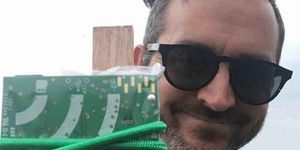4D Printing: Mitigating Limitations of 3D Fabrication
3D printing, also called additive manufacturing, is rapidly becoming commonplace in all industries, including aerospace, automotive, medical and dental, and consumer and industrial goods. Some advantages to 3D printing include flexible designs, fast prototyping, rapid production, sturdy and lightweight materials, minimal waste products, and cost effective. However, there are also disadvantages, including limited materials and building size, design inaccuracies, copyright concerns, and complicated part structures. The 3D printing process has also proven to be time-consuming and wasteful, as well.
However, a new study set to be published in ACM Transactions on Graphics examines how the shortcomings of 3D printing can be overcome with the advent of 4D printing, which involves self-folding that reduces time, materials, and waste. In fact, all the researchers need was water and UV-reactive materials to create their 3D designs and holds the potential to help streamline the process of manufacturing 3D products. For the study, the researchers used a unique type of inkjet printer that uses UV-reactive materials and heat to turn 2D origami designs into 3D products, including bunnies, hats, hemispheres, globes, and even a torus.
Examples of the 3D products the researchers created using their innovative 3D printing method. (Credit: 2023 Narumi et al. CC-BY-ND)
“Essentially, we’re creating flat sheets with origami patterns on them, and these patterns can be complex, taking even a skilled origami artist hours to form," said Dr. Koya Narumi, who is lead author of the study. "But thanks to our special process, you can pour hot water over these flat sheets and watch as they spring into complex 3D shapes in a matter of seconds.”
Going forward, the team hopes this new technology can be used for a myriad of purposes, specifically in fashion and bespoke design, where large amounts of materials are often wasted during the manufacturing process. Another aspect could be for storage purposes since the designs begin as pre-folded shapes.
What new discoveries will researchers make about 3D printing in the coming years and decades? Only time will tell, and this is why we science!
As always, keep doing science & keep looking up!
Sources: AMFG, TWI Ltd., EurekAlert!, The University of Tokyo









